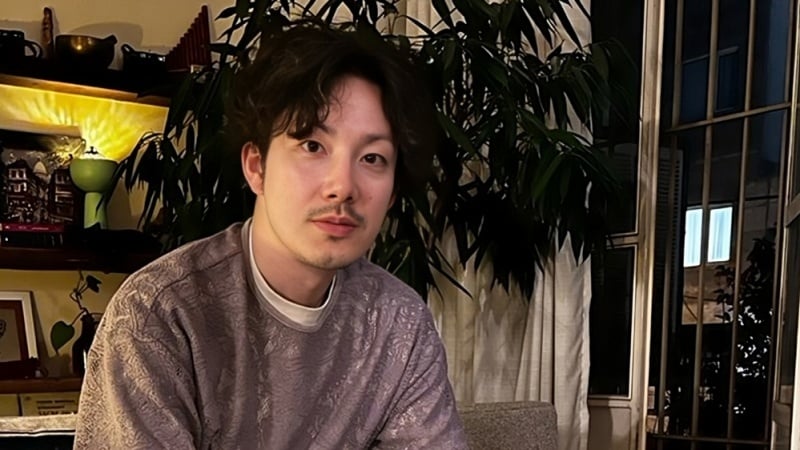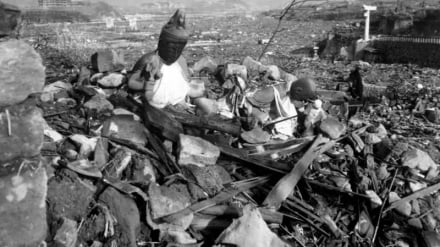Japanese musician: Iran is my second home
-

Kazune Iwasaki, a Japanese musician
Pars Today – Kazune Iwasaki, a Japanese musician and music instructor, has devoted many years of his life to becoming acquainted with traditional Iranian music and teaching it in Japan.
Kazune Iwasaki, a Japanese santur player, is one of the prominent figures in introducing Iranian music to Japanese society. According to Pars Today, Iwasaki first became acquainted with the santur through one of his Iranian teachers. He was so captivated by the instrument that he decided to travel to Iran to study it more deeply.
Iwasaki lived and studied in Iran for many years and has acquired an excellent command of Persian. He now runs a music school in Japan named “Pardis” and, through concerts and collaborations in international projects, introduces the santur to audiences in both the East and the West.
The Epoch Times, in an exclusive interview with this Japanese musician, explored aspects of his life.
How did you first become acquainted with the santur, and what was it about this instrument that captivated you?
During my undergraduate studies in ethnomusicology at Osaka College of Music, one of our professors was an Iranian woman who played and taught the santur. The aim of that course was to familiarize students with non-Western music. By choosing that course, I encountered the santur for the first time—and was immediately captivated by it.
It may sound strange, but my love for the santur has no particular reason. Sometimes we love something deeply without being able to find a clear explanation for it. For me, the santur was like a lightning bolt that suddenly struck my heart. The atmosphere and mood that this instrument created completely enchanted me.
What made you decide to travel to Iran for a deeper study of the santur?
After graduating from Osaka College of Music, I was supposed to start working at a company specializing in sound systems for concert halls. Two weeks before starting the job, I took a ten-day trip to Iran—my very first encounter with the country. That trip completely changed my perspective.
The culture, the lifestyle of the people, and hearing traditional Iranian music in public spaces such as hotels and restaurants were all fresh and impactful experiences for me. In addition, my thesis was about traditional Iranian music and the works of Master Javad Maroufi, and I felt it would be a shame to write about Iran without having seen it in person.
This trip became a decisive spark for me. During the visit, I toured the cities of Shiraz, Yazd, Isfahan, and Qom.
What was life and study in Iran like for you? What challenges and memories do you have from that period?
I traveled to Iran at an age when the experience of living there had a profound impact on me, which is why I consider Iran my second home. That said, starting life in Iran was not easy. I thought I could easily enroll at the University of Tehran and learn music, but everything turned out to be more complicated than I had imagined.
One of the professors told me that without knowing Persian, I would face difficulties. At first, I thought I could learn simply by imitating or just by listening, but I quickly realized I needed to learn Persian from the ground up. At that time, I only knew the alphabet and a few simple sentences.
Nevertheless, the warm-heartedness of the people and the help they readily offered kept my motivation strong.
Did the cultural differences between Iran and Japan influence your understanding of music?
During my studies in Iran, I did my utmost to play like Iranian musicians. Since the ears of Iranian people are attuned to this music from childhood, I tried to faithfully reproduce my teachers’ style through precise imitation.
However, when I returned to Japan, I decided to incorporate my own Japanese identity into my music as well. This effort led to performances such as the Silk Road concert, created in collaboration with musicians from various cultures. I also played the santur part in the music for films, such as the Shunga documentary and the anime Spice and Wolf.
In these works, I strove to preserve the atmosphere of the Iranian santur while placing it within a Japanese cultural context, aiming for an authentic fusion.
Do you have a particular memory from your time studying at the University of Tehran that has stayed with you?
In every class, I would bring a voice recorder and place it next to the teacher so I could listen to it repeatedly at home, as understanding the teacher's words was difficult for me. One thing my teacher said during the final sessions has always stayed in my mind:
“Iranian music is not something that can be learned through logic, like mathematics. It cannot be taught solely within the rigid framework of an academic system.”
At the time, I didn’t fully grasp the meaning of this sentence, but later I came to understand it completely. Iranian music has been passed down orally from generation to generation and possesses a living, dynamic spirit.
Do you try to combine Iranian music with elements of Japanese music?
Although the santur is an Iranian instrument, it evokes a sense of nostalgia for Japanese ears—perhaps because of its similarities to the koto. As a Japanese musician, staying true to my roots is important to me. While I learned Iranian music in Iran, I would like my future works to reflect more of my own identity.
Many artists in Iran perform traditional music beautifully, but I want to create something unique. Someone who has listened to music in Japan since childhood and then learned the santur in Iran can produce music that is a distinctive fusion of these two worlds. I want to create works that carry my own signature.
Do you have any upcoming projects that will help further introduce Iranian music on a global scale?
In the near future, a documentary about Kabuki, the traditional Japanese theater, will be released, in which I have performed sections of Iranian music on the santur. Although the film is Japanese, its musical atmosphere will be Iranian.
Final words?
My Japanese roots, along with my life in Iran and my study of Iranian music, have taught me that experiencing different cultures while preserving one’s personal identity can give a person freedom—freedom that leads to innovation and the creation of unique works.
MG


